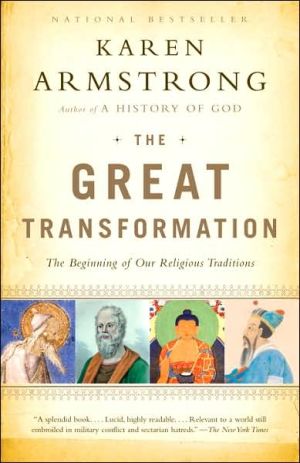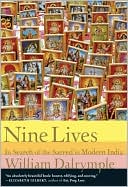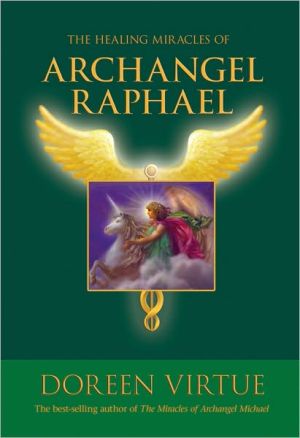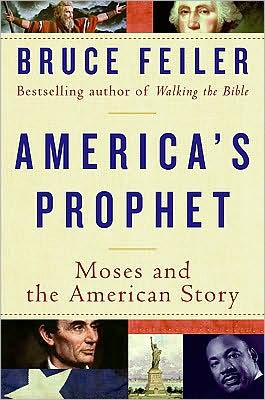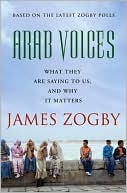The Great Transformation: The Beginning of Our Religious Traditions
From Karen Armstrong, the bestselling author of A History of God and The Spiral Staircase, comes this extraordinary investigation of a critical moment in the evolution of religious thought.In the ninth century BCE, events in four regions of the civilized world led to the rise of religious traditions that have endured to the present day—the development of Confucianism and Daoism in China, Hinduism and Buddhism in India, monotheism in Israel, and philosophical rationalism in Greece. Armstrong,...
Search in google:
From one of the world s leading writers on religion and the highly acclaimed author of the bestselling A History of God, The Battle for God and The Spiral Staircase, comes a major new work: a chronicle of one of the most important intellectual revolutions in world history and its relevance to our own time. In one astonishing, short period the ninth century BCE the peoples of four distinct regions of the civilized world created the religious and philosophical traditions that have continued to nourish humanity into the present day: Confucianism and Daoism in China; Hinduism and Buddhism in India; monotheism in Israel; and philosophical rationalism in Greece. Historians call this the Axial Age because of its central importance to humanity s spiritual development. Now, Karen Armstrong traces the rise and development of this transformative moment in history, examining the brilliant contributions to these traditions made by such figures as the Buddha, Socrates, Confucius and Ezeki... The New Yotk Times - William Grimes For the general reader The Great Transformation is an ideal starting point for understanding how the crowded heaven of warring gods, worshiped in violent rites, lost its grip on the human imagination, which increasingly looked inward rather than upward for enlightenment and transcendence.
The Great Transformation\ The Beginning of Our Religious Traditions \ \ By Karen Armstrong \ Knopf\ Copyright © 2006 Karen Armstrong\ All right reserved.\ ISBN: 0-375-41317-0 \ \ \ Chapter One\ ASRA THE AXIAL PEOPLES \ (c. 1600 to 900 BCE)\ The first people to attempt an Axial Age spirituality were pastoralists living on the steppes of southern Russia, who called themselves the Aryans. The Aryans were not a distinct ethnic group, so this was not a racial term but an assertion of pride and meant something like "noble" or "honorable." The Aryans were a loose-knit network of tribes who shared a common culture. Because they spoke a language that would form the basis of several Asiatic and European tongues, they are also called Indo-Europeans. They had lived on the Caucasian steppes since about 4500, but by the middle of the third millennium some tribes began to roam farther and farther afield, until they reached what is now Greece, Italy, Scandinavia, and Germany. At the same time, those Aryans who had remained behind on the steppes gradually drifted apart and became two separate peoples, speaking different forms of the original Indo-European. One used the Avestan dialect, the other an early form of Sanskrit. They were able to maintain contact, however, because at this stage their languages were still very similar, and until about 1500 they continued to live peacefully together, sharing thesame cultural and religious traditions.\ It was a quiet, sedentary existence. The Aryans could not travel far, because the horse had not yet been domesticated, so their horizons were bounded by the steppes. They farmed their land, herded their sheep, goats, and pigs, and valued stability and continuity. They were not a warlike people, since, apart from a few skirmishes with one another or with rival groups, they had no enemies and no ambition to conquer new territory. Their religion was simple and peaceful. Like other ancient peoples, the Aryans experienced an invisible force within themselves and in everything that they saw, heard, and touched. Storms, winds, trees, and rivers were not impersonal, mindless phenomena. The Aryans felt an affinity with them, and revered them as divine. Humans, deities, animals, plants, and the forces of nature were all manifestations of the same divine "spirit," which the Avestans called mainyu and the Sanskrit-speakers manya. It animated, sustained, and bound them all together.\ Over time the Aryans developed a more formal pantheon. At a very early stage, they had worshiped a Sky God called Dyaus Pitr, creator of the world. But like other High Gods, Dyaus was so remote that he was eventually replaced by more accessible gods, who were wholly identified with natural and cosmic forces. Varuna preserved the order of the universe; Mithra was the god of storm, thunder, and life-giving rain; Mazda, lord of justice and wisdom, was linked with the sun and stars; and Indra, a divine warrior, had fought a three-headed dragon called Vritra and brought order out of chaos. Fire, which was crucial to civilized society, was also a god and the Aryans called him Agni. Agni was not simply the divine patron of fire; he was the fire that burned in every single hearth. Even the hallucinogenic plant that inspired the Aryan poets was a god, called Haoma in Avestan and Soma in Sanskrit: he was a divine priest who protected the people from famine and looked after their cattle.\ The Avestan Aryans called their gods daevas ("the shining ones") and amesha ("the immortals"). In Sanskrit these terms became devas and amrita. None of these divine beings, however, were what we usually call "gods" today. They were not omnipotent and had no ultimate control over the cosmos. Like human beings and all the natural forces, they had to submit to the sacred order that held the universe together. Thanks to this order, the seasons succeeded one another in due course, the rain fell at the right times, and the crops grew each year in the appointed month. The Avestan Aryans called this order asha, while the Sanskrit-speakers called it rita. It made life possible, keeping everything in its proper place and defining what was true and correct.\ Human society also depended upon this sacred order. People had to make firm, binding agreements about grazing rights, the herding of cattle, marriage, and the exchange of goods. Translated into social terms, asha/rita meant loyalty, truth, and respect, the ideals embodied by Varuna, the guardian of order, and Mithra, his assistant. These gods supervised all covenant agreements that were sealed by a solemn oath. The Aryans took the spoken word very seriously. Like all other phenomena, speech was a god, a deva. Aryan religion was not very visual. As far as we know, the Aryans did not make effigies of their gods. Instead, they found that the act of listening brought them close to the sacred. Quite apart from its meaning, the very sound of a chant was holy; even a single syllable could encapsulate the divine. Similarly, a vow, once uttered, was eternally binding, and a lie was absolutely evil because it perverted the holy power inherent in the spoken word. The Aryans would never lose this passion for absolute truthfulness.\ Every day, the Aryans offered sacrifices to their gods to replenish the energies they expended in maintaining world order. Some of these rites were very simple. The sacrificer would throw a handful of grain, curds, or fuel into the fire to nourish Agni, or pound the stalks of soma, offer the pulp to the water goddesses, and make a sacred drink. The Aryans also sacrificed cattle. They did not grow enough crops for their needs, so killing was a tragic necessity, but the Aryans ate only meat that had been ritually and humanely slaughtered. When a beast was ceremonially given to the gods, its spirit was not extinguished but returned to Geush Urvan ("Soul of the Bull"), the archetypical domestic animal. The Aryans felt very close to their cattle. It was sinful to eat the flesh of a beast that had not been consecrated in this way, because profane slaughter destroyed it forever, and thus violated the sacred life that made all creatures kin. Again, the Aryans would never entirely lose this profound respect for the "spirit" that they shared with others, and this would become a crucial principle of their Axial Age.\ To take the life of any being was a fearful act, not to be undertaken lightly, and the sacrificial ritual compelled the Aryans to confront this harsh law of existence. The sacrifice became and would remain the organizing symbol of their culture, by which they explained the world and their society. The Aryans believed that the universe itself had originated in a sacrificial offering. In the beginning, it was said, the gods, working in obedience to the divine order, had brought forth the world in seven stages. First they created the Sky, which was made of stone like a huge round shell; then the Earth, which rested like a flat dish upon the Water that had collected in the base of the shell. In the center of the Earth, the gods placed three living creatures: a Plant, a Bull, and a Man. Finally they produced Agni, the Fire. But at first everything was static and lifeless. It was not until the gods performed a triple sacrifice-crushing the Plant, and killing the Bull and the Man-that the world became animated. The sun began to move across the sky, seasonal change was established, and the three sacrificial victims brought forth their own kind. Flowers, crops, and trees sprouted from the pulped Plant; animals sprang from the corpse of the Bull; and the carcass of the first Man gave birth to the human race. The Aryans would always see sacrifice as creative. By reflecting on this ritual, they realized that their lives depended upon the death of other creatures. The three archetypal creatures had laid down their lives so that others might live. There could be no progress, materially or spiritually, without self-sacrifice. This too would become one of the principles of the Axial Age.\ The Aryans had no elaborate shrines and temples. Sacrifice was offered in the open air on a small, level piece of land, marked off from the rest of the settlement by a furrow. The seven original creations were all symbolically represented in this arena: Earth in the soil, Water in the vessels, Fire in the hearth; the stone Sky was present in the flint knife, the Plant in the crushed soma stalks, the Bull in the victim, and the first Man in the priest. And the gods, it was thought, were also present. The hotr priest, expert in the liturgical chant, would sing a hymn to summon devas to the feast. When they had entered the sacred arena, the gods sat down on the freshly mown grass strewn around the altar to listen to these hymns of praise. Since the sound of these inspired syllables was itself a god, as the song filled the air and entered their consciousness, the congregation felt surrounded by and infused with divinity. Finally the primordial sacrifice was repeated. The cattle were slain, the soma pressed, and the priest laid the choicest portions of the victims onto the fire, so that Agni could convey them to the land of the gods. The ceremony ended with a holy communion, as priest and participants shared a festal meal with the deities, eating the consecrated meat and drinking the intoxicating soma, which seemed to lift them to another dimension of being.\ The sacrifice brought practical benefits too. It was commissioned by a member of the community, who hoped that those devas who had responded to his invitation and attended the sacrifice would help him in the future. Like any act of hospitality, the ritual placed an obligation on the divinities to respond in kind, and the hotr often reminded them to protect the patron's family, crops, and herd. The sacrifice also enhanced the patron's standing in the community. Like the gods, his human guests were now in his debt, and by providing the cattle for the feast and giving the officiating priests a handsome gift, he had demonstrated that he was a man of substance. The benefits of religion were purely material and this-worldly. People wanted the gods to provide them with cattle, wealth, and security. At first the Aryans had entertained no hope of an afterlife, but by the end of the second millennium, some were beginning to believe that wealthy people who had commissioned a lot of sacrifices would be able to join the gods in paradise after their death.\ This slow, uneventful life came to an end when the Aryans discovered modern technology. In about 1500, they had begun to trade with the more advanced societies south of the Caucasus in Mesopotamia and Armenia. They learned about bronze weaponry from the Armenians and also discovered new methods of transport: first they acquired wooden carts pulled by oxen, and then the war chariot. Once they had learned how to tame the wild horses of the steppes and harness them to their chariots, they discovered the joys of mobility. Life would never be the same again. The Aryans had become warriors. They could now travel long distances at high speed. With their superior weapons, they could conduct lightning raids on neighboring settlements and steal cattle and crops. This was far more thrilling and lucrative than stock breeding. Some of the younger men served as mercenaries in the armies of the southern kingdoms, and became expert in chariot warfare. When they returned to the steppes, they put their new skills to use and started to rustle their neighbors' cattle. They killed, plundered, and pillaged, terrorizing the more conservative Aryans, who were bewildered, frightened, and entirely disoriented, feeling that their lives had been turned upside down.\ Violence escalated on the steppes as never before. Even the more traditional tribes, who simply wanted to be left alone, had to learn the new military techniques in order to defend themselves. A heroic age had be-gun. Might was right; chieftains sought gain and glory; and bards celebrated aggression, reckless courage, and military prowess. The old Aryan religion had preached reciprocity, self-sacrifice, and kindness to animals. This was no longer appealing to the cattle rustlers, whose hero was the dynamic Indra, the dragon slayer, who rode in a chariot upon the clouds of heaven. Indra was now the divine model to whom the raiders aspired. "Heroes with noble horses, fain for battle, selected warriors call on me in combat," he cried. "I, bountiful Indra, excite the conflict, I stir the dust, Lord of surpassing vigour!" When they fought, killed, and robbed, the Aryan cowboys felt themselves one with Indra and the aggressive devas who had established the world order by force of arms.\ But the more traditional, Avestan-speaking Aryans were appalled by Indra's naked aggression, and began to have doubts about the daevas. Were they all violent and immoral? Events on earth always reflected cosmic events in heaven, so, they reasoned, these terrifying raids must have a divine prototype. The cattle rustlers, who fought under the banner of Indra, must be his earthly counterparts. But who were the daevas attacking in heaven? The most important gods-such as Varuna, Mazda, and Mithra, the guardians of orderwere given the honorific title "Lord" (ahura). Perhaps the peaceful ahuras, who stood for justice, truth, and respect for life and property, were themselves under attack by Indra and the more aggressive daevas? This, at any rate, was the view of a visionary priest, who in about 1200 claimed that Ahura Mazda had commissioned him to restore order to the steppes. His name was Zoroaster.\ When he received his divine vocation, the new prophet was about thirty years old and strongly rooted in the Aryan faith. He had probably studied for the priesthood since he was seven years old, and was so steeped in tradition that he could improvise sacred chants to the gods during the sacrifice. But Zoroaster was deeply disturbed by the cattle raids, and after completing his education, he had spent some time in consultation with other priests, and had meditated on the rituals to find a solution to the problem. One morning, while he was celebrating the spring festival, Zoroaster had risen at dawn and walked down to the river to collect water for the daily sacrifice. Wading in, he immersed himself in the pure element, and when he emerged, saw a shining being standing on the riverbank, who told Zoroaster that his name was Vohu Manah ("Good Purpose"). Once he had been assured of Zoroaster's own good intentions, he led him into the presence of the greatest of the ahuras: Mazda, lord of wisdom and justice, who was surrounded by his retinue of seven radiant gods. He told Zoroaster to mobilize his people in a holy war against terror and violence. The story is bright with the promise of a new beginning. A fresh era had dawned: everybody had to make a decision, gods and humans alike. Were they on the side of order or evil?\ (Continues...)\ \ \ \ \ Excerpted from The Great Transformation by Karen Armstrong Copyright © 2006 by Karen Armstrong. Excerpted by permission.\ All rights reserved. No part of this excerpt may be reproduced or reprinted without permission in writing from the publisher.\ Excerpts are provided by Dial-A-Book Inc. solely for the personal use of visitors to this web site. \ \
1The Axial peoples (c. 1600 to 900 BCE)32Ritual (c. 900 to 800 BCE)493Kenosis (c. 800 to 700 BCE)864Knowledge (c. 700 to 600 BCE)1255Suffering (c. 600 to 530 BCE)1676Empathy (c. 530 to 450 BCE)2027Concern for everybody (c. 450 to 398 BCE)2458All is one (c. 400 to 300 BCE)2899Empire (c. 300 to 220 BCE)33110The way forward367
\ From Barnes & NobleAccording to religion scholar Karen Armstrong, something extraordinary happened in the ninth century B.C.E. During this relatively brief period, people in four regions of the civilized world created religious and philosophical traditions that continue to nourish humanity to the present day: Confucianism, Daoism, Hinduism, Buddhism, Greek philosophical rationalism, and monotheism in Israel. Armstrong believes that the central spiritual lessons of this Axial Age are often lost in modern interpretations of these seminal teachings.\ \ \ \ \ William GrimesFor the general reader The Great Transformation is an ideal starting point for understanding how the crowded heaven of warring gods, worshiped in violent rites, lost its grip on the human imagination, which increasingly looked inward rather than upward for enlightenment and transcendence.\ — The New Yotk Times\ \ \ Lauren F. Winner… Armstrong's call to rededicate our religious selves to compassion, other-directed love and service is downright rousing. People from many different faiths will close this book reminded of the value their tradition places on compassion and recommitted to expressing it in their own religious idiom.\ — The Washington Post\ \ \ \ \ Publishers WeeklyIt's not what one may expect from a book about the development of the world's religions: "Crouched in his mother's womb, he lay in wait for his father, armed with a sickle, and the next time Uranus penetrated Gaia, he cut off his genitals and threw them to the earth." However, the Greek myth of Cronus clearly illustrates Armstrong's main thesis, that the "simultaneous" development of the world's religions during what Karl Jung called the axial age, is a direct result of the violence and chaos, both physical and spiritual, of past civilizations. Armstrong, a former nun turned self-described "freelance monotheist," has enough background and personal investment in the material to make it come alive. Her delivery is crystal clear, informative and, though somewhat academic, easy for the layman to understand. Her voice is straightforward yet wrought with palpable concern. This reinforces the book's goals of creating a clear understanding of where religious developments have come from and explaining how today's "violence of an unprecedented scale" parallels the activities that created the "axial age" in the first place. Simultaneous release with the Knopf hardcover (Reviews, Jan. 16). (Apr.) Copyright 2006 Reed Business Information.\ \ \ \ \ KLIATTThe work of Karen Armstrong has a place in high school libraries. I do understand that her books will have a limited readership at that level: read only by academic-minded young people and their teachers who have an interest in comparative religions. Her importance as a resource on the world's religions (especially with the current conflicts in the Middle East and our lack of understanding of Islam, Christianity, and Judaism) is evidenced by her best-selling books and frequent appearances on serious TV and radio shows. This title discusses the evolution of religion from warrior gods representing ethnic interests to the Golden Rule of showing compassion to others, not just to people in our own family and tribal group. Armstrong tracks the parallels in China, India, Israel, and Greece as Buddhism, Daoism, Judaism, and Greek philosophy evolved in times of terrible cultural upheavals in the 1st millennium BCE. At the end of the masterwork, she tells how Islam and Christianity grew out of these transformations and traditions. The sections on Greek religion and philosophy, as revealed to us via the works of Homer, the dramatists, and the philosophers, are especially riveting. High school students studying these subjects could make good use of Armstrong's work. The Greeks represent her thesis so clearly: the endless struggle in our cultures between those who want absolute truths and those who embrace the search for truth, trying to live a life of compassion as part of that search. Consider this work and any of her others. The History of God and Jerusalem: One City, Three Faiths and her works of individual biography, Buddha and Muhammad, perhaps are the first choices forlibrarians. The Great Transformation is a stunning example of her knowledge of religious history and her wonderful ability to write about complicated ideas in a way that is clear.\ \ \ \ \ Library JournalThis could very possibly be one of the greatest intellectual histories ever written. An intensely revealing and enlightening spiritual and philosophical history, it chronicles the Axial period (1600-220 B.C.E.) and hopes for a transfiguration of our current dangerous and violent world into one of compassion, ahimsa, and love. It may seem nearly impossible to chronicle and contrast the religions of India, China, Israel, and Greece, but Armstrong (Holy War: The Crusades and Their Impact on Today's World) pulls it off by weaving a careful counterpoint of commonalities inherent in this planet's religions. She points out, for example, that Ezekiel, Socrates, Confucius, and the Buddha all seem to espouse similar "spiritual technologies" in humankind's quest to allay cosmic loneliness through knowledge, empathy, and mutual concern and to enhance its understanding of the meaning of life through others' perspectives. Both liberals and conservatives in all the world's religious and political camps could benefit from the historical insights gathered in this eminently significant volume. Strongly recommended for all libraries and readers. [See Prepub Alert, LJ 12/05.]-Gary P. Gillum, Brigham Young Univ. Lib., Provo, UT Copyright 2006 Reed Business Information.\ \ \ \ \ Kirkus ReviewsProlific religious-studies scholar Armstrong (The Spiral Staircase, 2004, etc.) offers a lively, big-picture treatise in comparative religions, finding similarities more than differences. Borrowing from the German philosopher Karl Jaspers, and with ecumenical good cheer, Armstrong evokes an Axial Age that lasted for about 700 years, from roughly 900 to 200 b.c. During that time came great faiths that "have continued to nourish humanity": Hinduism and Buddhism from India; Daoism and Confucianism from China; rationalism from Greece; and monotheism from what is now the vicinity of Israel. Armstrong allows that there's quite a lot of scholarly guesswork attendant in looking into the prehistory of these faiths; in recent years, for instance, it has been determined-for the time being, anyway-that Zoroaster lived centuries before the usually presumed sixth century and that Laozi (Lao Tse), the Daoist philosopher, lived centuries later. Still, there is enough good data to show that each of these worldviews, sometimes independent of each other, sometimes by word of mouth, addressed similar concerns in quite similar ways: Each recognized that suffering is "an inescapable fact of human life," indeed part of its definition; and each developed a body of doctrine or learned opinion about such core ethical principles as hospitality, empathy and "concern for everybody." Of course, these big ideas come wrapped in very different packages; though informed by "the Deuteronomists' passionate insistence on the importance of justice, equity, and compassion," the ancient Israelites took their instructions from the "one true god," whereas the Greeks advanced the same sorts of ideas through a panoply of gods andthe Buddhists through no god at all. The point being, as Armstrong writes, that tolerance is a sine qua non in a world in which so many people "prefer being right to being compassionate." A useful text for an intolerant and uncompassionate time. First printing of 100,000\ \ \ \ \ From the Publisher"The Great Transformation can serve the needs of new readers interested in a popular work that synthesizes scholarship. . . . [U]seful to anyone seeking an integral sense of world religions."\ —The Globe and Mail\ Praise for Karen Armstrong:\ "Karen Armstrong is a genius."\ —A. N. Wilson, author of Jesus: A Life\ "Armstrong is a lucid writer with a knack for synthesizing vast quantities of research."\ —The Globe and Mail\ "Armstrong’s writing continues to offer a religious mirror and a cultural vision."\ —Amazon.com\ "Armstrong has a dazzling ability: she can take a long and complex subject and reduce it to the fundamentals, without oversimplifying."\ —The Sunday Times\ From the Hardcover edition.\ \ \
